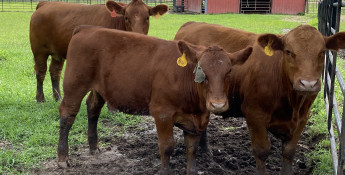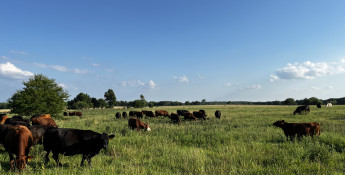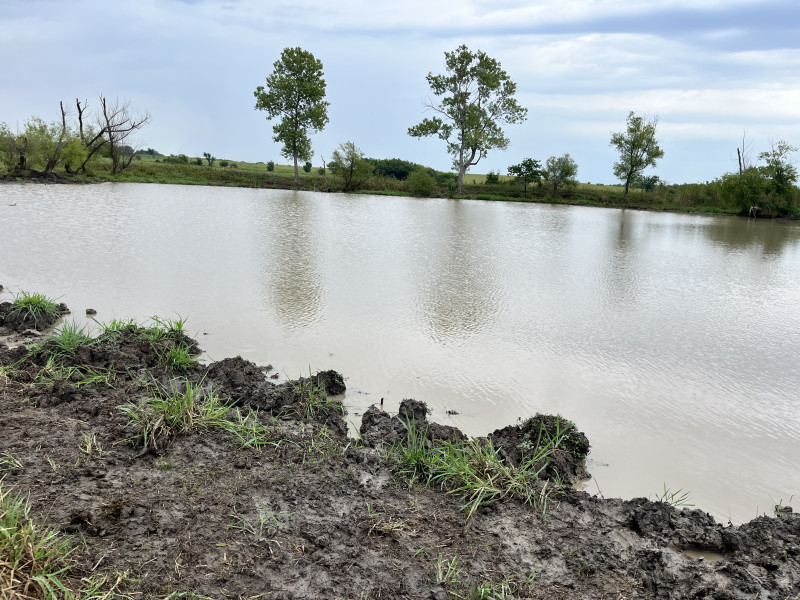By Brandi Buzzard on August 21, 2023
The Importance of Water on Kansas Ranches
Cry me a river...please!
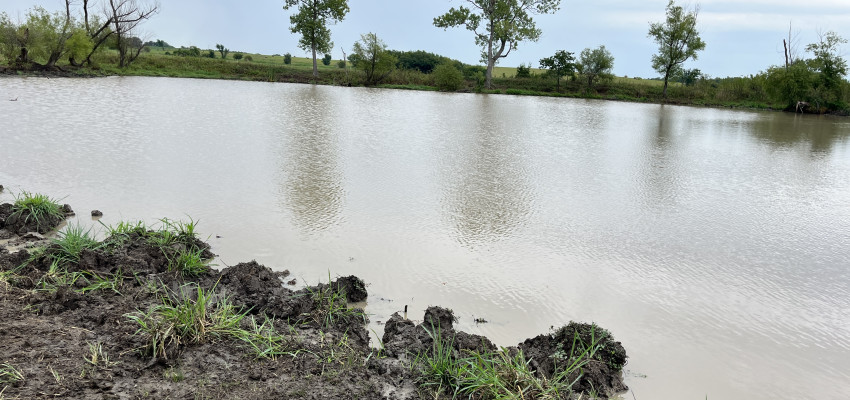
It would be difficult, in my opinion, to be unaware of the drought spreading across Kansas. And yes, it is the middle of one of the hottest summers on record and rain is generally sparse during August. However, it has been unusually dry in many areas, and while this has tangible and visible impacts for water recreation, lawn management and city pools, what may not be as visible are the effects drought has on farms and ranches across our beloved Wheat State.
We live on the eastern edge of Kansas and, typically, we are wet in the spring, fall and winter. Our precipitation, which totals approximately 55 inches per year, generally ends in the beginning of July and doesn’t reappear until late September. This differs greatly from our western Kansas peers who receive roughly 20 inches of precipitation annually. Because of these infrequencies, the methods we use to manage pastures and grow food for our livestock can vary greatly from our fellow producers on the other end of the state.
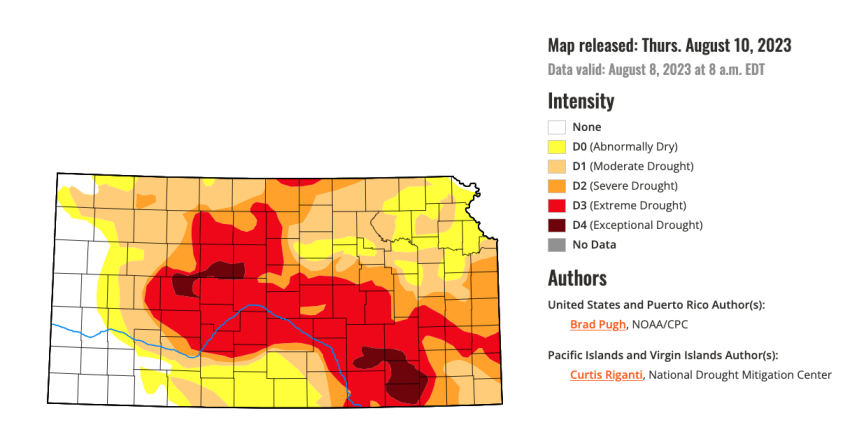 For us, there isn’t a day that goes by we aren’t thinking about the weather and thinking about winter feed – even in August. For example, March through October, we are really praying for rain to either 1) support grass growth for summer grazing 2) provide sustenance for the forages we have planted or 3) boost our cool season grasses in the fall. We are not big fans of rain in November – February because cold rain and mid-thirty-degree temperatures are not a recipe for success for calves. We’d rather have frozen ground and snow during that time, to be honest.
For us, there isn’t a day that goes by we aren’t thinking about the weather and thinking about winter feed – even in August. For example, March through October, we are really praying for rain to either 1) support grass growth for summer grazing 2) provide sustenance for the forages we have planted or 3) boost our cool season grasses in the fall. We are not big fans of rain in November – February because cold rain and mid-thirty-degree temperatures are not a recipe for success for calves. We’d rather have frozen ground and snow during that time, to be honest.
Our winter worries stem from not having enough feed for our cows from the forages we have grown, harvested and stored. Another concern is not being able to justify the cost of additional feed based on a cost-benefit analysis. So many of our management decisions center on the amount of moisture we receive. When we are in a drought, not only do we worry more about the winter, but we also start discussing other options if forage is short.
If we don’t keep our eye on the ball and fail to prepare for winter, especially in a drought, there are a few potential negative outcomes. First, our input costs could be much more expensive because we’re going to be forced to buy more feed later in the winter when it will be higher-priced. Higher input costs for ranchers eventually trickle down into higher prices on beef at the grocery store. Secondly, we may have to weigh the decision of whether to sell cows in order to have enough cash flow for the winter and thirdly, the temptation to overgraze pastures is strong when we are short on forage.
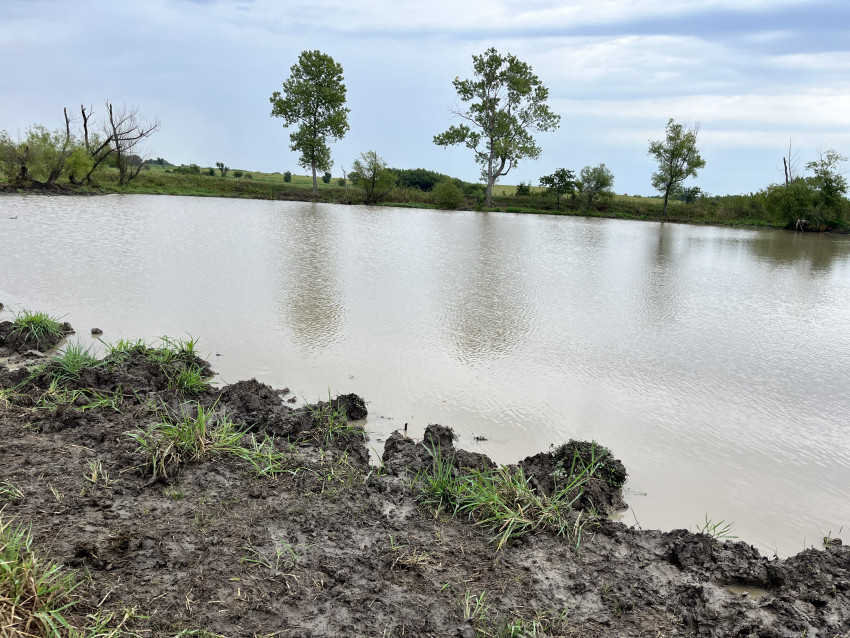
Ranchers anxiously watch their pond levels recede during a drought and hope that the ponds are replenished before harmful algae blooms develop.
There are a few ways to manage low-level ponds to prevent algae blooms from impacting our livestock, such as providing another water source or altering the shape and depth of the pond, but those can be costly and time-consuming. The better solution would be for rain to keep water sources full!
Clearly, every farm or ranch across our great state has its own situation and manages their operation during a drought in the best way they see possible – whether that be growing their own feed, adjusting herd size or stocking rate or purchasing additional feed. Rain equals plentiful forage and plentiful forage leads to healthy cows and pastures, so we keep our eye on the sky and have the Weather Channel app pinned to our phones’ home screens. We are at the mercy of Mother Nature when it comes to rainfall, however, the plans and strategies we put into place hopefully allow us to capitalize on rain when it does arrive.


